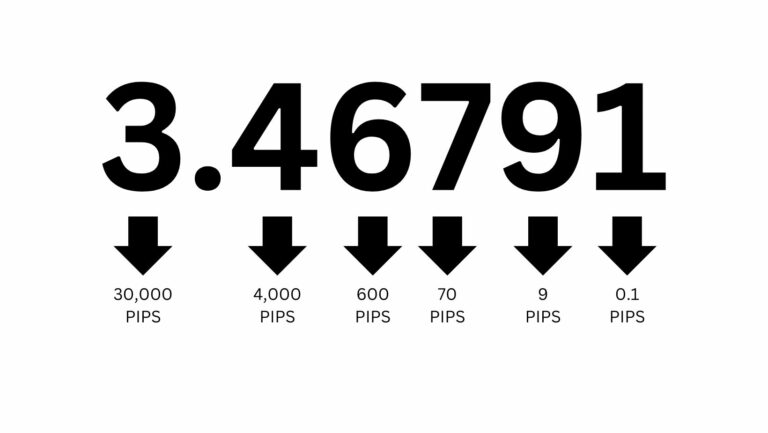In forex trading, the term “pip” stands for “price interest point” and represents the smallest unit of price change in an exchange rate according to forex market conventions. Sometimes, pip is also interpreted as “percentage in points.”
What is a Pip?
For most currency pairs, prices are quoted to four decimal places, with a single pip represented by the fourth decimal place. In other words, a pip is equivalent to one-hundredth of one percent (0.0001). It measures the bid-ask spread in a forex quote.
When buying or selling a currency pair, the quotes are shown as bid-ask spreads, usually measured to four decimal places. Any change in the exchange rate is denoted by pips. The value of a pip varies depending on the currency pair, the trade value, and the exchange rate. An exception to the four-decimal place rule is the Japanese yen (JPY) pairs, which are quoted to two decimal places.
What is a Pipette?
For more precise measurements, fractional pips or pipettes are used. A pipette is equal to one-tenth of a pip and is represented as a superscript numeral in a quoted exchange rate.
Why Are Pips Significant?
Pips are crucial because they track changes in the value of a currency pair, which is a primary factor in determining a trader’s daily profit or loss. Understanding pips is essential for making informed trading decisions in the forex market.
The Need for Understanding Pips
A firm grasp of pips is vital for forex traders to manage leverage and risk effectively. Pips represent the most fundamental unit of measurement for currency movements, reflecting the smallest conventional price change an exchange rate can make. Knowledge of pips helps traders track potential gains or losses accurately.
Conclusion
Investing in forex trading can be profitable, but it’s crucial to understand all related terminology, strategies, pros, and cons. For more information and to expand your knowledge of forex trading, visit Regulated Forex Brokers.




